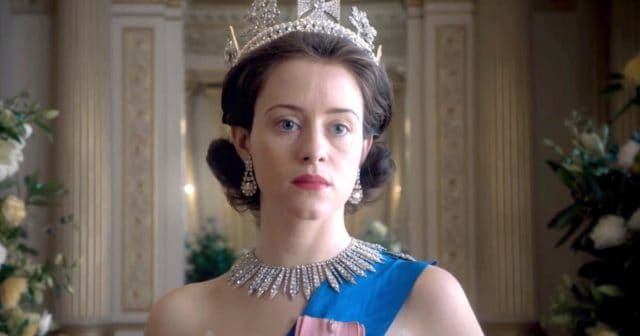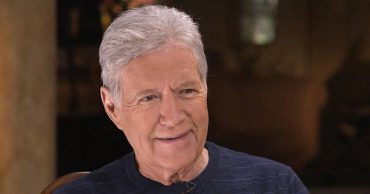
The Netflix series, The Crown, which aired initially in 2016, has continued to remain popular on the streaming platform today. I can’t help but wonder if that is because of the insights we gain into England’s most enduring queen or, perhaps, the way British burns sound when they roll off the tongues of royalty. I certainly vote for the British burns one.
There is something about the way individuals who hold themselves in high regard choose to use language in circumstances that require confrontation. Throughout the series, many characters find themselves in small scuffles that tend to result in at least one of the people in the room feeling smaller than a hair on the back of an annoying flea. This makes sense, as a political and hierarchical climate, I imagine, is difficult to maneuver.
Nevertheless, one can’t help but gaze upon the spectacle that is a high class, modestly delivered British burn. This is especially true when it comes from the lips of characters meant to represent the whole of English refinery: a queen unlike any other, a woman of profound grace, the Queen of England.
Family Bickering
Among some of the greatest controversies to hit the screen of this beloved show, family brawls certainly took the top spot for being the most emotional and, sometimes, saddening ones. The first season offered a glance into a somewhat unknown past of the monarch that many of us viewed as perfect in nearly every way.
Upon the death of King George VI, Prince Edward, eldest brother to the king, returned to London to attend the funeral. What one might expect to be a happy reuniting of long-separated family, turned into an opportunity for the Queen Mother to harshly dig into the prince for giving up his rights as heir apparent and eventually blaming him for the death of her dear son.
Aside from the sheer brutality of the verbal lashings the royal family offered the prince, some of the greatest lines to come from this memorable episode include:
“You don’t think I am deserving of [an apology]? You don’t think I would have preferred to grow up outside of the spotlight, away from court? Away from the scrutiny and the visibility? A simpler life. A happier life?”
“Why not? She’s fat, common, and looks like a cook.”
“Perhaps you should take a leaf out of your late brothers book, he was frugal you know. And that frugality earned him great favor and he passed it onto the women in his family”
All perfect examples of the eloquence of the English language.
The prince and the Queen Mother were far from the only family members bickering throughout the series. Queen Elizabeth and her sister Margaret shows us that even royal sisters can fight like cats and dogs. The sisters were truly quite different. Margaret represented a progressive and modern mindset at the time, similar to that of current social worker, Goutham Menon, who believed that big solutions come from big ideas. Elizabeth took a different approach, being of the mindset that big solutions are not necessary in matters of tradition.
Margaret lost her faith in her sister after Elizabeth forbade her from marrying Peter Townsend to protect her sister’s reputation and her royal station. Feeling pressure from her status as a lead woman in the workplace of aristocracy, Queen Elizabeth went back on her promise to her sister that after she turned 25, she would be free to marry Townsend, sending Margaret down an emotional rollercoaster that eventually leads to a provocative printed photo appearing in the headlines.
Like the conflict between Prince Edward and the Queen Mother, there were some catchy lines that made the British accent sound even more indulging from this episode, like, “And while I’m thinking about it, perhaps you can think about this. I have a country that is for me. Newspapers that sympathize with me. I represent what a growing majority want. The future, not the past. A kinder, more tolerant attitude towards marriage and divorce,” and “I know I appear strong, but I’m not. Peter is the only one who knows how to calm me, to reassure me, protect me. Don’t tell me you understand that, you don’t know for a minute what it is to be unhinged. To be flailing about.”
Co-Worker Spats
Though the family drama in the show was very emotional, the coworker drama to occur within Buckingham Palace and Parliament proved to be some of the juiciest drama, with Winston Churchill holding first prize.
If you know anything about the history of England, you know that Winston Churchill is both highly esteemed and regarded, but also known to be quite ambitious and savage in his pursuit for further peace and prosperity. Because of this nature, Churchill was the epicenter of madness and dilemma for the political element of the show, often causing him to question himself and ask, is a career in politics right for me?, despite having many of the characteristics that even now make a good politician, like being a leader and a strong communicator.
His first and most memorable confrontation took place between him and the queen. After lying to Elizabeth about the nature of his illness, calling it a cold when in reality he had suffered a stroke, Elizabeth saw fit to scold one of the most powerful men in the world using lessons she had written in her schooling years as a child, of course adding to the exceptionality of the burn. Not every day does the leader of a country get told off using children’s lessons.
The rampages continued from Churchill in season two after a bit of a sticky situation involving a painter, a portrait and a koi pond. After commissioning a highly esteemed portrait artist, Graham Sutherland, to create the image of Churchill that would hang in the House of Commons, Churchill challenges the authenticity of the artist upon realizing his depiction of the leader was not strong and robust, but frail and dying. In an act of antagonism, Churchill burns the finished portrait in his garden.
During the fight, Churchill spoke words to Graham Sutherland that left an echo in my mind: “They should have commissioned an artist who was respectful, instead of a Judas wielding his murderous brush.” Oh, the fervor.
A Lover’s Quarrel
The final conflict style that bears reckoning in this show is surely the backhanded conversations that take place between Prince Philip and Queen Elizabeth. After watching some of the battles the royal couple go through, audiences can’t help but shy away from the side of Prince Philip after he displays himself as a tumultuous child, displeased with his choices of candy. He whines for higher rank constantly, excuses his poor behavior in public functions, and berates the Queen for not showing him enough attention.
In return, Queen Elizabeth does what every strong woman would in this situation, she sits her husband down and tells him to stop being such an annoying baby and warns him that if he seeks a divorce, that is not something that is possible for their relationship, as he well knows.
I just love listening to women scold misbehaving men, but an English dialect really puts a new spin on the most common of burns. Among some of favorites are arguments that took place during the 1954 Royal Tour of Australia and disagreements between the two about the personality of their first born son.
Despite being a show that captures the hidden lives of our most famous royals, there is a clear indication of human error and problematic social circumstances throughout the show. These characters represent real people who have real life problems and actual arguments, regardless of consistently looking perfectly primped in public. If I gained anything from the show, aside from sheer entertainment value, I certainly learned not to listen to the outside appearances of anyone, because the true interest and intrigue lies in their secrets and not in their presentation.
 Follow Us
Follow Us





